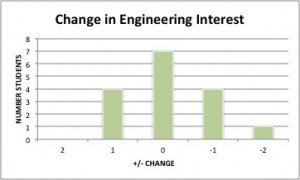I am trying to think of a good way to track engineering skills over time. I will be tracking this year’s K class as they progress to sixth grade. Is there a task I can give them that will work over all these years? I thought making a chair (from the Tufts CEEO first grade lesson) but could it involve robots later? Ideally, it was be the same or similar so we could easily see the changes but what would work over such a long time and such a change in development?
-
Archives
- December 2024
- November 2024
- January 2024
- December 2023
- October 2023
- January 2023
- October 2022
- August 2022
- May 2022
- April 2022
- October 2021
- September 2021
- April 2021
- March 2021
- December 2020
- November 2020
- October 2020
- September 2020
- May 2020
- November 2019
- August 2019
- October 2018
- August 2018
- June 2018
- March 2018
- December 2017
- October 2017
- September 2017
- May 2017
- April 2017
- February 2017
- January 2017
- October 2016
- September 2016
- August 2016
- June 2016
- February 2016
- December 2015
- November 2015
- September 2015
- August 2015
- July 2015
- June 2015
- May 2015
- April 2015
- March 2015
- January 2015
- December 2014
- October 2014
- July 2014
- May 2014
- April 2014
- March 2014
- February 2014
- January 2014
- December 2013
- November 2013
- October 2013
- September 2013
- July 2013
- June 2013
- May 2013
- April 2013
- March 2013
- January 2013
- December 2012
- November 2012
- September 2012
- July 2012
- June 2012
- May 2012
- April 2012
- March 2012
- February 2012
- January 2012
- December 2011
- November 2011
- October 2011
- September 2011
- August 2011
- July 2011
- June 2011
- May 2011
- April 2011
- March 2011
- February 2011
- January 2011
- March 2010
- January 2009
-
Meta


